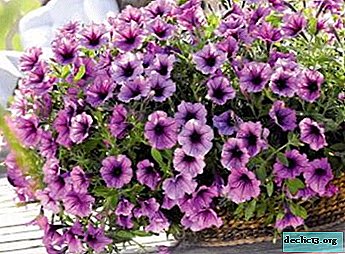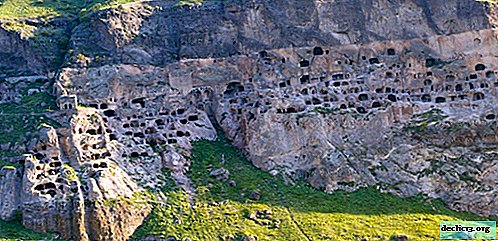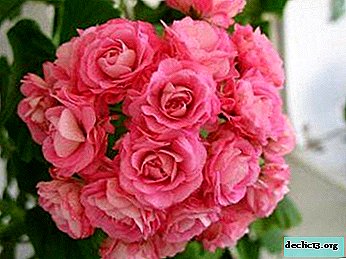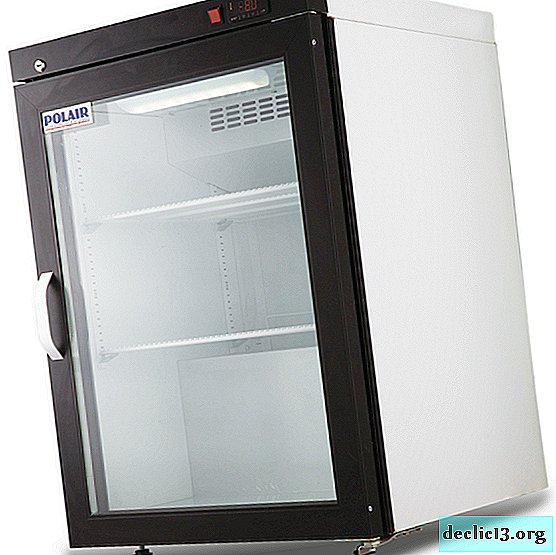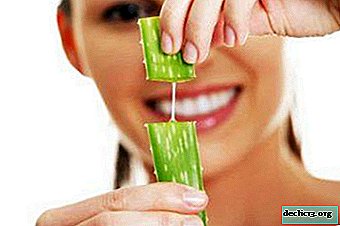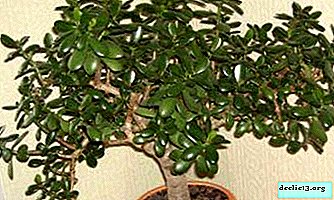Kind of rhododendron golden light. How to care for him?
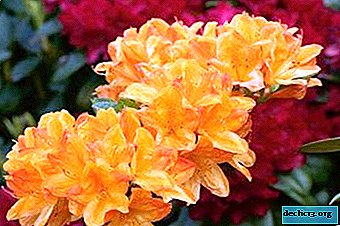
The large-flowered deciduous deciduous rhododendron golden light has lower care requirements than other evergreen rhododendrons. Due to its resistance to frost and disease, this variety is very popular among gardeners. In addition, it is used in landscape compositions, especially to create a Japanese style.
Next, we will tell you more about this flower, namely: how it differs from azaleas, proper care, reproduction. And also what diseases and pests should be feared.
A brief definition of the type of Golden lights
Rhododendron Golden lights (Golden lights) - deciduous variety of hybrid origin, bred in the United States. Differs in high frost resistance. It is considered a decorative flower.
Detailed description
- Decorative bush grows to 1.5 - 2 m. It blooms from mid-May, belongs to the early varieties.
- The bush is compact, the form is straight and loose, with age the bush thickens, grows in the hemisphere.
- The crown is wide, in diameter reaches up to 1 - 1.5 m.
- The leaves are oblong, wide, up to 6 cm, pointed at the ends, 10 cm long. The leaves are wedge-shaped at the base. The color of the leaves is olive green, in autumn the leaves change color and become saturated with a bright bard shade. In winter, the leaves fall.
- Stems - shoots branch well.
- The flowers are salmon-orange, funnel-shaped, medium in size, up to 5 cm in diameter. The throat of the flower itself is lighter than the edge of the petals, they have a pink hue.
- Inflorescences are large bouquets, in each inflorescence gathers up to 8 - 10 flowers.
Photo
Next, you can see a photo of the Golden Light view:





History of occurrence
The emergence of the hybrid rhododendron golden light has a long history, which began in the 30s of the 20th century. The first varieties were bred at American University of Minnesota in 1978., as part of a project to develop super frost-resistant rhododendrons.
Work on the removal of stable exotics is ongoing in our time, hybrid varieties of rhododendron golden light are widely used by domestic florists.
What is the difference from other azaleas?
- Rhododendron Golden Light is characterized by a high level of frost resistance, can withstand temperatures down to 40 - 42 ° C.
- A feature of rhododendron golden light - flowering begins simultaneously with the blooming of leaves.
- The variety is distinguished by a special, pronounced sweet aroma.
- Resistant to fungal diseases and pests.
Subcort
Golden Eagle
On a note. The bush is deciduous, grows vertically, grows up to 170 - 180 cm in height, the diameter of the funnel-shaped crown is 1 m. It grows slowly, the bush is dense.The leaves are oblong - long, up to 10 cm. Wide - 5 cm, bright saturated green color. Shiny, tight. In autumn, change color to orange or red. Inflorescences combine 7 to 9 flowers, which bloom simultaneously with the leaves. The flowers are fragrant, reddish-orange, funnel-shaped, with a diameter of 50 - 60 mm. Bloom in May. The variety has an average winter hardiness.

Speaks Orange
Fast-growing and frost-resistant variety. The leaves are oblong, saturated green. In the fall they turn orange - yellow. The bush is thick, sprawling, grows to a height of 1, 5 m. The flowers are gently - orange, double, large flowers - cups in shape. Flowers are collected in inflorescences of 10 flowers each. The diameter of the flower is average, up to 7 - 8 cm. It blooms in mid-May, blooms for 3 weeks.

Glowing embers
Reference. A distinctive feature is that it grows vertically, the average height reaches 1.5 - 1.8 m. The diameter of the funnel-shaped crown of an adult flower usually reaches 1m.The bush is dense, growing slowly. The leaves are large, up to 10 cm long and 4 to 5 cm wide. The leaves are dense, glossy, bright green. In autumn they change color to orange - red. Flowers are collected in inflorescences of 6 to 10 flowers in each. Blooms in early June, fragrant flowers.

Bloom
When and how does this happen?
Rhododendron Golden Light blooms from mid-May, blooms until early June. Abundant flowering, begins simultaneously with the deployment of leaves. It is considered a large-flowered variety.
How to care?
- During flowering, good lighting and plentiful watering are necessary.
- During bud formation, the temperature should be reduced to 10 - 12 ° C.
- After flowering, young shoots are pruned for further cuttings. Old inflorescences are recommended to be cut.
What if there are no buds?
- It is important to use fertilizers with superphosphate to prolong flowering and the formation of new inflorescences.
- Perhaps the substrate is not enough minerals, you can feed with special fertilizers.
- It is necessary to check the bush for the presence of parasites - they impede the growth and flowering of Golden Light Rhododendron.
Use in garden design
Rhododendron Golden Light looks good in composition with perennials, with conifers, with juniper. These varieties of azaleas are decorated with mixborders - mixed flower beds - Japanese-style compositions.
Care
Seat selection
For planting rhododendron golden light it is better to choose places that are protected from through wind. This variety prefers light partial shade - it is afraid of direct sunlight.
What should be the soil?
Rhododendron golden light is planted on acidic, fertilized, loose soils. The composition of the substrate for rhododendron golden light:
- Garden land - 1 hour
- Sour riding moss - sphagnum - 2 hours
- Drainage base.
Landing
The landing procedure of rhododendron golden light is performed sequentially:
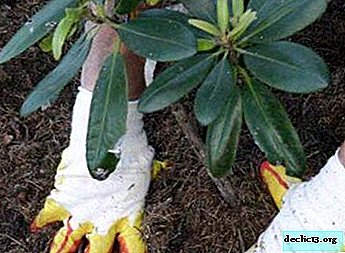 Dig a deep hole, 40 - 50 cm deep, with a diameter of 60 - 70 cm.
Dig a deep hole, 40 - 50 cm deep, with a diameter of 60 - 70 cm.- At the bottom put drainage, a layer of 10 - 15 cm.
- Half the pit is filled with moss - sphagnum.
- Then fill with a mixture of loose soil and humus leaf.
- Planting bush is placed vertically.
- Fall asleep with a soil mixture on the root neck.
- Mulch the soil around the bush.
It is necessary to form a drain for accumulated water.
Temperature
The frost-resistant variety, even in severe winters, can withstand temperatures up to - 40 ° C. Usually this variety is not covered, but if the winter is not snowy, then shelter with coniferous spruce branches or burlap is recommended. Rhododendron Golden Light prefers a humid cool climate, the optimum temperature is 10 - 15 ° C. In the summer, with additional spraying, it can tolerate up to 30 ° C.
Watering
Rhododendron golden light is very hygroscopic, abundant watering is required during growth and flowering. In late autumn and winter, you can water only in dry weather, watering is reduced by 2 times.
Note! It should be watered over the entire surface of the soil so that the surface structure of the roots is not washed out.Top dressing
Fertilizers for rhododendron golden light should be special, intended only for acidic soils. It is advisable to fertilize the substrate 1.5 to 2 months before the onset of frost with potash and phosphorus fertilizers in a ratio of 1: 2. In early spring, mineral fertilizers are required: 40 g per 1 sq.m.
It is not recommended to feed and transplant during the formation of flower buds, they can crumble.
Pruning
Golden light rhododendrons in the first 3 to 4 years after planting require regular pruning to improve branching and form a beautiful bush. Also, too long last year's shoots should be cut - they are cut in half.
Remove faded inflorescences in time. Such cleaning contributes to the full laying of the kidneys.
Transfer
Transplantation is carried out in early spring, and can be transplanted after flowering. Golden light rhododendrons take root well. When transplanting, the seedling is surrounded by a rim of coniferous needles and moss - sphagnum, 6 - 7 cm thick. This layer is delayed by snow, which protects the roots from freezing.
Breeding
Rhododendron golden light at home propagated by cuttings:
 In the spring, when laying kidneys, cuttings of 6-8 cm long are cut.
In the spring, when laying kidneys, cuttings of 6-8 cm long are cut.- The cut should be oblique, the edges at the base of the handle are carefully cleaned of bark.
- Cuttings are dipped for a day in a solution with a root growth stimulator.
- For rooting, they are planted in a ready-made special substrate to a depth of 2 cm at an angle of 30 °.
- Well watered and covered with glass or film.
- Soil temperature - 24 - 26 ° С, air temperature should be 2 - 5 degrees lower.
- Seedlings take root very slowly, up to 1.5 months.
Diseases and Pests
Rhododendron golden light is quite resistant to fungal diseases.
- But the flower may be prone to attack by the spider mite. A soap solution will help get rid of it.
- From a mealybug, a rhododendral bug, spraying with any insecticides helps - actar or phytoverm. The procedure should be repeated 3-4 times with an interval of 8-9 days.
Prevention of various problems
Problems can arise from insufficient or, conversely, strong waterlogging of the soil, fertilizers containing lime and chlorine.
- Cercosporosis - A common leaf disease of rhododendron golden light. Affected leaves must be collected and destroyed. For prevention, the bushes are sprayed with copper-containing preparations or a solution of Bordeaux fluid.
- To get rid of rust, chlorosis and other fungi, processing is required - watering and spraying with fungicides.
Golden Lightts, North American rhododendron, is considered one of the hardiest large-flowered shrubs. With minimal effort, these exotics bloom generously, forming a flowering bush.

 Dig a deep hole, 40 - 50 cm deep, with a diameter of 60 - 70 cm.
Dig a deep hole, 40 - 50 cm deep, with a diameter of 60 - 70 cm. In the spring, when laying kidneys, cuttings of 6-8 cm long are cut.
In the spring, when laying kidneys, cuttings of 6-8 cm long are cut.
